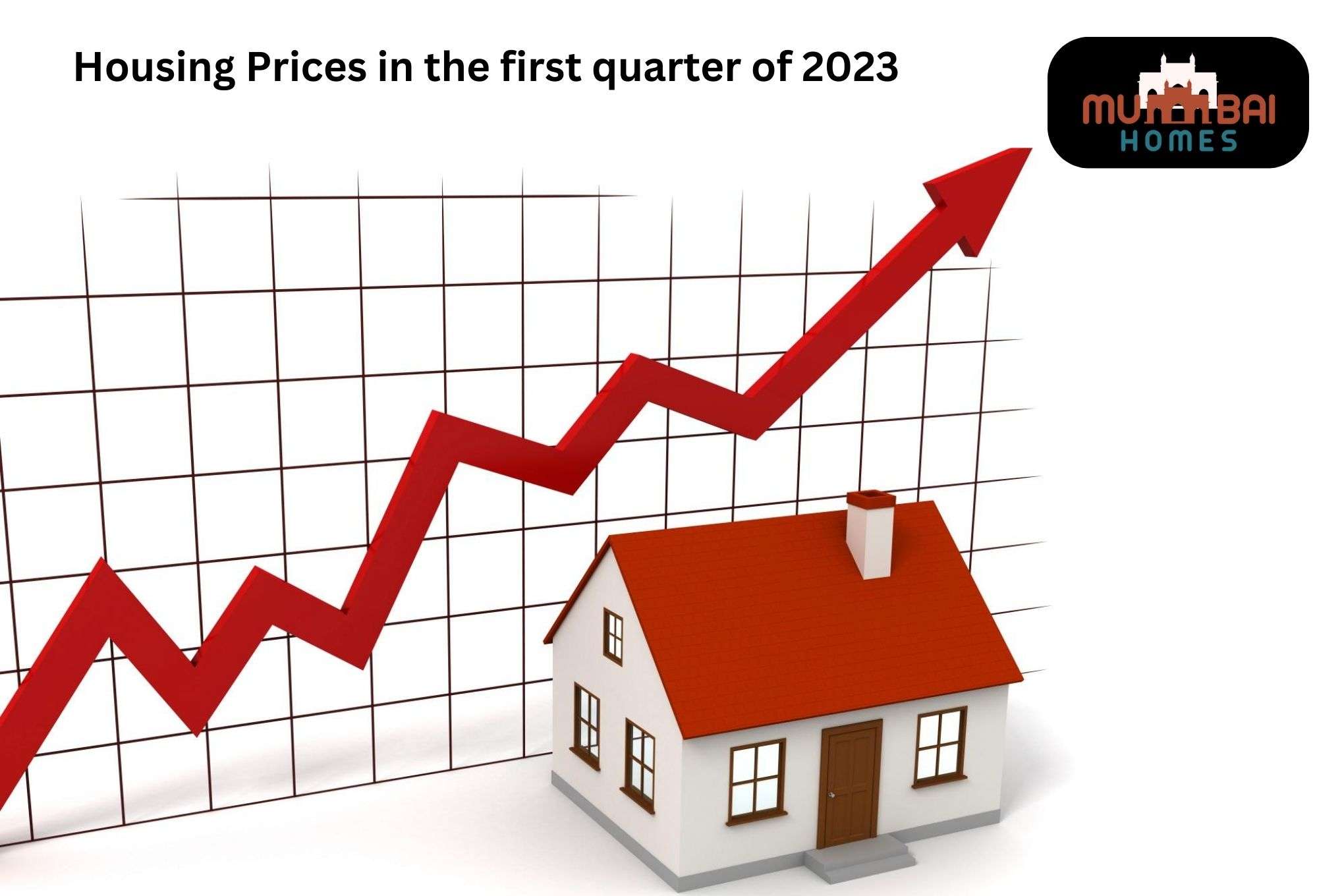Report on the Housing Market:- Strong Demand Drives 8% YoY Surge in Housing Prices in the first quarter of 2023:
Strong demand Drives an 8% YoY Surge in Housing Prices in the first quarter of 2023, which was the key cause behind this significant rise. These factors include improved economic conditions, low-interest rates, supportive government policies for home ownership, and a limited supply of available housing Market. Buyers may face challenges, including increased competition and higher prices, while sellers may benefit from significant gains. Making wise judgments requires keeping a careful eye on real estate market trends.
Housing Price Growth in Quater-1 2023:
Notable was the first quarter of 2023’s 8% year-over-year increase in real estate prices. This growth exceeded overall inflation and exceeded market expectations. Such robust price growth demonstrates the strength and resilience of the real estate market despite prevailing economic uncertainties. This was driven by sustained demand, limited supply, and favorable financing conditions. Buyers have faced increasing challenges, while sellers have benefited from an increase in the housing Market. It is important to monitor market developments closely to make informed decisions.
Strong demand drivers:
A. Low mortgage rates:
Historically low mortgage rates have been a major contributor to rising housing Market demand. Favorable borrowing conditions encouraged potential buyers to enter the market as low rates increased affordability and reduced the cost of borrowing.
B. Population growth:
Steady population growth, stimulated by both natural increase and net migration, played a significant role in the rise in housing demand. The growth in population in certain metropolitan areas has raised the demand for homes, placing increasing pressure on prices. Due to heightened buyer rivalry brought on by the mismatch between supply and demand, house prices have continued to rise.
C. Lifestyle and Work Arrangement Changes:
The COVID-19 pandemic has led to significant changes in lifestyle and work arrangements, further fueling housing Market demand. Telework policies and a preference for larger living spaces have led individuals to seek new homes, often in suburban or rural areas. This change in demand habits has contributed to the rise in real estate prices, particularly in regions offering more space and equipment.
D. Limited housing supply:
Insufficient housing supply remained a major challenge in many regions during the first quarter of 2023. Construction delays, land scarcity and labour shortages have hampered the pace of new housing Market construction, resulting in limited supply. Buyers have had to confront heightened competition due to strong demand and limited supply, which has resulted in outbidding and higher pricing.
Regional variations:
housing Market performance varied across the regions during the first quarter of 2023. Some metropolitan areas experienced even higher price growth, exceeding the national average. Strong demand in large cities, combined with limited supply, contributed to these regional variations. When entering the market or determining the worth of their property, buyers and sellers should be aware of these geographical variations.
Implications for buyers and sellers:
A. Homebuyers:
For buyers, particularly first-time buyers or those wishing to make improvements to their houses, rising property costs offer difficulties. Limited housing Market supply and increased competition can make it more difficult to find affordable options. Buyers must be rigorous in their research, work closely with real estate agents and be prepared to act quickly in a competitive market.
B. Sellers:
Rising real estate prices offer positive prospects for sellers. Because there is a strong demand for the items and a limited supply, dealers may command higher prices for them. However, it is essential for sellers to carefully consider market conditions, pricing strategies, and the potential impact on their ability to find a suitable replacement housing Market.
Market Outlook:
Despite some ongoing difficulties, the real estate sector has an optimistic outlook. Although the price rise may decelerate in the upcoming quarters, strong demand is anticipated. Factors such as low mortgage rates, population growth, and changing lifestyle preferences should continue to support the market. However, addressing the issue of limited housing supply is crucial to maintaining a sustainable Housing Market.
Conclusion:
8% YoY Surge in Housing Prices in the first quarter of 2023. This growth was mainly driven by strong demand, driven by low mortgage rates, population growth, changes in lifestyle and work arrangements, and a limited supply of housing Market. Regional variations were observed, with some areas experiencing even higher price growth. Buyers and sellers must navigate the market with caution, taking into account regional differences and adapting to the current competitive landscape. The prognosis for the housing market remains favorable, but actions to alleviate home supply bottlenecks are required to preserve long-term market stability.
FAQs,
1. What contributed to the 8% YoY surge in housing prices in the first quarter of 2023?
Ans: Strong demand, fueled by elements like low mortgage rates, population growth, changes in lifestyle and employment patterns, and a dearth of available housing, was the main cause of the spike in housing prices.
2. How did low mortgage rates impact the housing market?
Ans: Affordability and borrowing costs decreased as a result of historically low mortgage rates that encouraged potential homebuyers to enter the market. Because of this, demand increased, pushing up the cost of housing.




